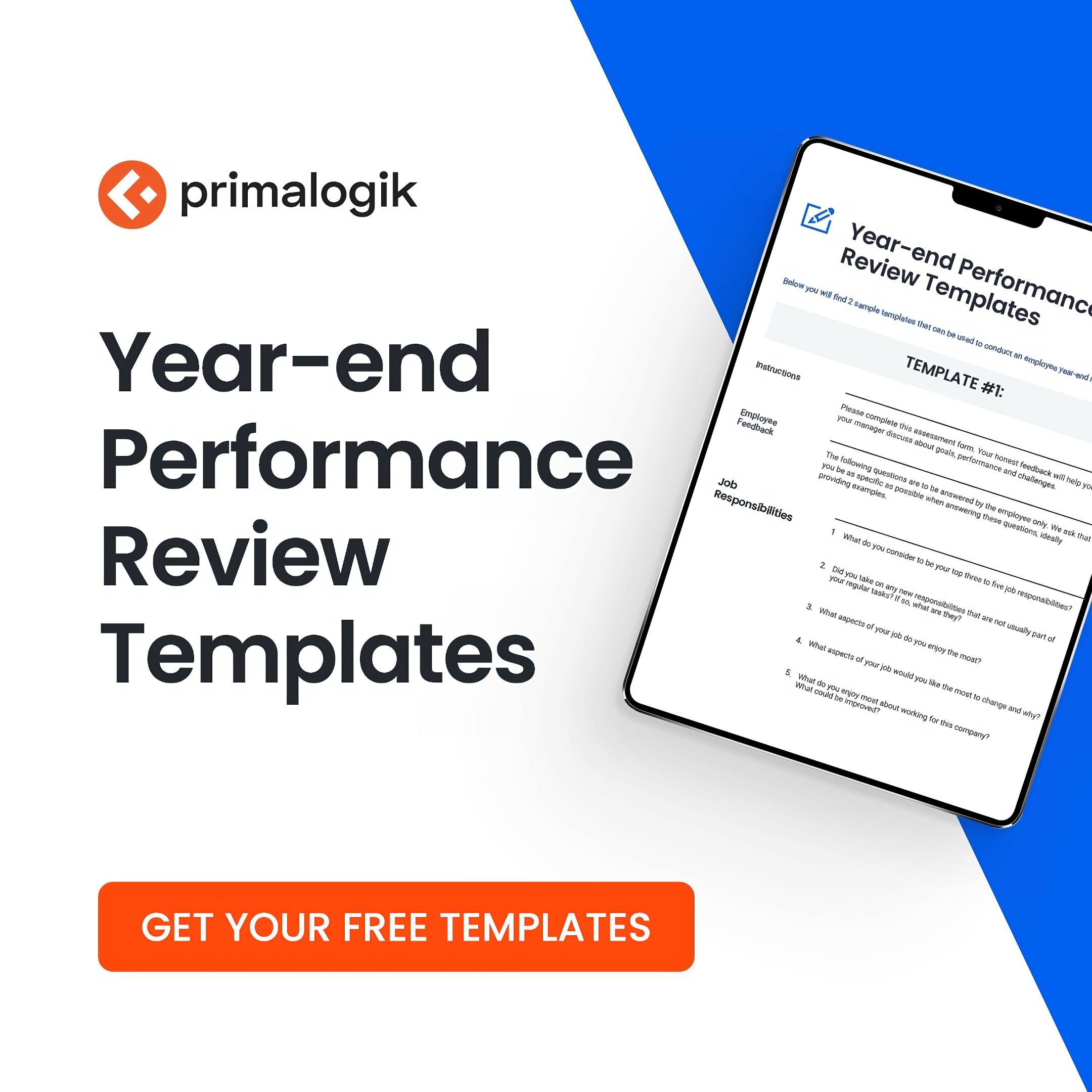A 360-degree leadership assessment provides invaluable direction for leaders. And according to renowned leadership consultants Jack Zenger and Joseph Folkman, this has a powerful ripple effect throughout the organization. When one leader improves, everyone around them follows in their footsteps—including other leaders.
“Investing in leadership development at the top can pay big dividends,” they assert. “What better influence can a senior team have on a company than to make clear that the top team is collectively working on becoming more effective in their roles?”
Let’s dive into what a 360-degree assessment for leaders involves. Then, we’ll explore qualities to evaluate, how to implement a 360 review, and how to leverage the data you gain.
Table of Contents
- What Is a 360-Degree Leadership Assessment?
- Why Conduct 360-Degree Assessments for Leaders?
- Competencies to Measure in a 360 Leadership Assessment
- Implementing 360-Degree Assessment for Leaders
- Actionable Insights and Development Plans
- Challenges and Considerations
What Is a 360-Degree Leadership Assessment?
A 360 assessment for leaders reveals how their behaviours and choices shape their effectiveness. Peers, direct reports, superiors, and other colleagues share their experiences and impressions of qualities central to leadership.
Many questions in a 360 assessment focus on an individual’s human skills. But for leaders, the evaluation can also ask questions related to business acumen. We’ll share examples in a moment.
A 360-degree leadership assessment can be conducted both for executives and managers. Leaders at every level will benefit from periodic reviews.
Why Conduct 360-Degree Assessments for Leaders?
While 360 reviews benefit all employees, they offer several specific benefits for leaders:
- Enhancing self-awareness – they learn how their leadership style affects their team and organization.
- Improving decision-making – leaders gain feedback on their strategic thinking and decision-making processes.
- Building trust and transparency – leaders learn how to strengthen relationships, grow emotional intelligence, and promote organizational health.
At higher levels, a broad range of skills play a critical role in success. So, professional development becomes more complex. Leaders may therefore feel confused about where to focus, making a 360 review especially crucial.
Further, leaders may gain less feedback on their performance than employees do. Direct reports may feel uncomfortable sharing unsolicited input, and high-level leaders may not have a supervisor to share feedback. Hence, without 360-degree assessment, leaders often struggle to understand if people are truly benefiting from their leadership style—and what to improve. In some cases, leaders have serious blind spots that minimize their effectiveness.
A 360 assessment for leaders diminishes fear about sharing constructive input. By making feedback anonymous, it empowers employees to voice issues. Plus, it conveys appreciation for candid input, supporting a healthy feedback-sharing culture.
Further, a well-designed 360 review will illuminate links between leaders’ behaviours and business outcomes, as Zenger and Folkman note. Leaders will see how their approach affects engagement, retention, and the success of team projects.
By doing so, a 360-feedback initiative helps leaders become more effective in managing people and driving change. Regular 360 assessments for leaders will promote organizational success, furthering your mission.
Competencies to Measure in a 360 Leadership Assessment

Let’s review some of the qualities to evaluate in a 360-degree assessment for leaders. These competencies can differentiate extraordinary leaders from those who are merely satisfactory. We’ve grouped the 20 skills listed below into several vital areas of leadership.
Teamwork
- Collaboration
- Communication
- Conflict resolution
Emotional Intelligence
- Empathy
- Inclusivity
- Optimism
Personal Ethics
- Reliability
- Integrity
- Accountability
Talent Management
- Coaching
- Mentoring
- Delegation
Project Management
- Time-management
- Attentiveness
- Adaptability
- Problem-solving
Business Acumen
- Strategic-thinking
- Innovation
- Change-management
- Decision-making
A leader’s 360 assessment will typically encompass the same human skills as an employee’s 360 review. However, it will also assess qualities particular to leadership in areas like coaching, talent management, and strategic thinking. For example, the U.S. Office of Personnel Management evaluates leaders on 28 core competencies, including integrity, motivation to serve others, leveraging diversity, financial management, and negotiation ability.
In addition to rating questions on such qualities, the 360 review should include several open-ended questions. This will allow each reviewer to provide examples and context to support their ratings.
Implementing 360-Degree Assessment for Leaders
Successfully deploy a 360 feedback initiative for leaders through the following steps:
- Use 360 feedback tools to gather and analyze feedback. Good 360 software solutions will make the process feel almost effortless, while enhancing accuracy of data.
- Don’t cherry-pick participants who are most likely to give positive feedback. Leaders can suggest reviewers who know their work well, but choose a broad spectrum of people.
- Urge leaders to personally invite these participants to share feedback. This will empower reviewers to be more candid, knowing they won’t face negative repercussions for honest input.
- Advise leaders to share personal goals for the process, as the Society for Human Resource Management suggests. For example, they could say, “Through this review, I want to learn how to boost engagement and strengthen my project management abilities.”
Quality software will offer a customizable 360 assessment template, containing thoughtful 360 review questions for leaders. Building on this foundation, you can make modifications based on your organization’s needs.

Actionable Insights and Development Plans

Next, translate feedback into actionable development plans. Don’t presume that leaders—even advanced ones—will be able to do this without support. Rather, HR must partner with them in this effort.
Consider contextual factors when interpreting data, as Joel M. Rothaizer says in Forbes. Has the business been restructuring? Did the leader take on the role during a volatile time? Such factors may colour opinions.
After reviewing the results, leaders must distill the data into clear strengths and areas to work on. Partner with them in this process. Rothaizer suggests starting with questions that spark reflection:
- What felt most surprising to you about the results?
- What comments felt most moving?
- Which strengths and challenges were you already aware of?
- Which ones caught you off guard?
- Who are you when you’re at your best as a leader?
- Who are you when you’re not at your best?
Also ask, “Which of your areas for improvement is most critical to your success as a leader?” Discussion of these questions will highlight weaknesses to address. It can also reveal emerging strengths that leaders can further leverage.
Work with leaders to craft specific goals related to the feedback. Design 3–5 goals, which is a manageable number to remember and work toward on a daily basis. Having more goals would create confusion and derail focus from the most crucial ones.
Challenges and Considerations
In any feedback-sharing initiative, challenges can arise. Let’s review some potential hurdles, along with best practices for ensuring constructive and respectful feedback.
Lack of a Managerial Perspective
Top executives may not have anyone supervising them. This can mean you’ll lack the perspective of a direct manager in their 360 review. However, you can compensate by gaining in-depth feedback from peers. HR can also review their performance closely, providing input. Consider asking board members or clients who work closely with them to complete reviews as well.
Fear of Repercussions
Even in an anonymous survey, employees may feel anxious about sharing detailed feedback about leaders. They may worry that certain comments will reveal who they are. This could lead them to silence their opinions or deliver vague feedback instead of specific examples.
As you build a culture of sharing feedback, these issues will diminish. When leaders assertively ask for honest feedback, employees will feel more comfortable giving it. After each review, leaders should warmly thank all participants for taking part in the survey. They can also name two or three key revelations from the constructive feedback that they plan to work on. This will increase positive feelings about the 360 review process, while also promoting accountability.
Additionally, you can work to eliminate small details that might reveal employees’ identity when delivering survey results. You can also synthesize key takeaways from several related comments.
Difficulty Taking Action
Leaders can foster psychological safety by seeking feedback, but only if they avoid defensiveness and prioritize taking action, research has shown. So, work with each leader to outline steps to take and resources to utilize. Follow up routinely, providing them with coaching. Also utilize goal-tracking software to monitor progress.
By following these best practices, you’ll provide leaders with clear and actionable input. And by creating a culture of sharing feedback, you’ll gain more valuable results. When conducted thoughtfully, 360 leadership assessments will play a major role in the development of leaders at every level. Instead of wondering what subordinates and peers think of them, they’ll gain eye-opening insights that catalyze profound personal growth!
Learn how performance management solutions can support your leaders’ growth—demo our product.




![How to Use the 9-Box Talent Review [Free Template Included]](https://primalogik.com/wp-content/uploads/2024/08/pexels-silverkblack-23496606-400x250.jpg)

